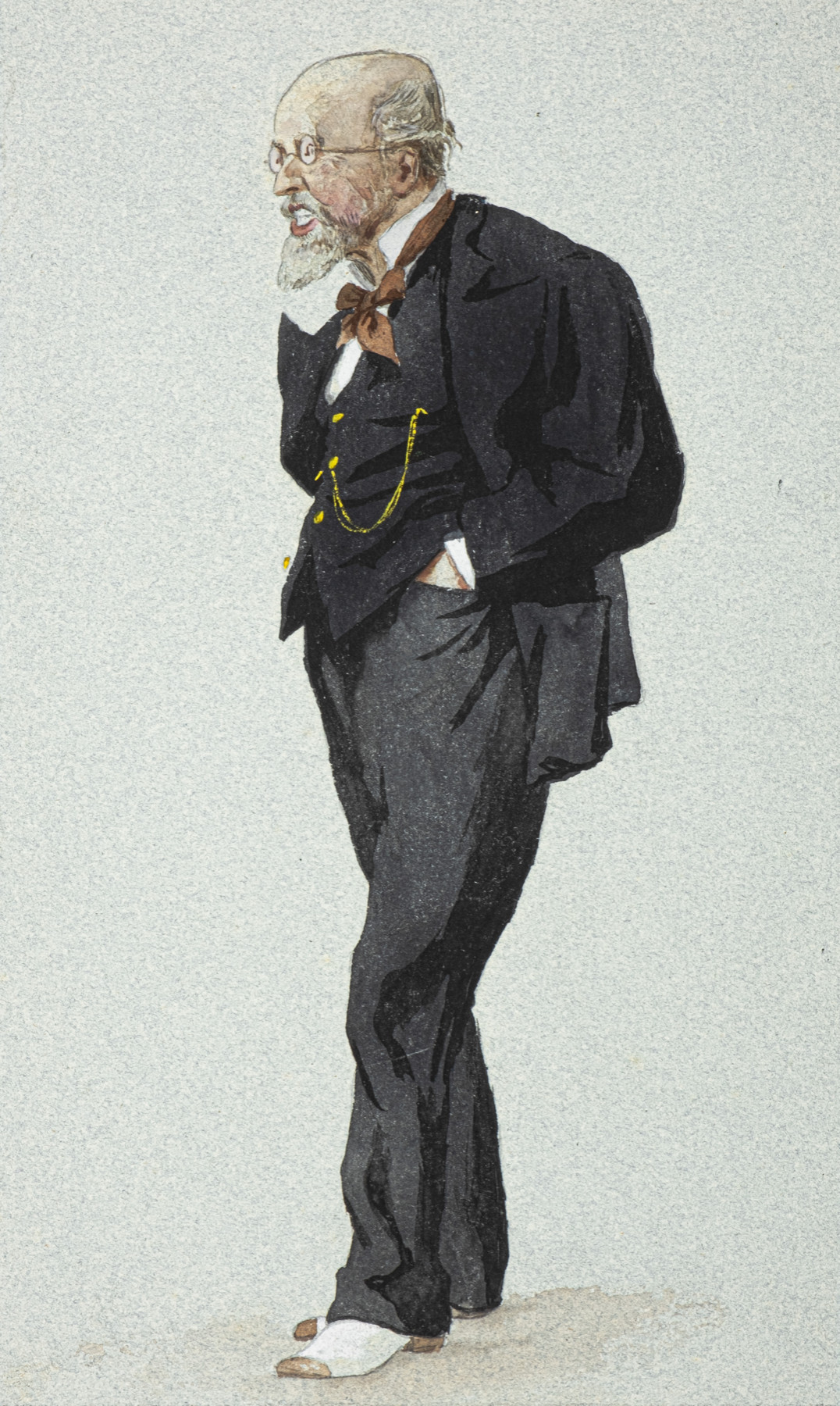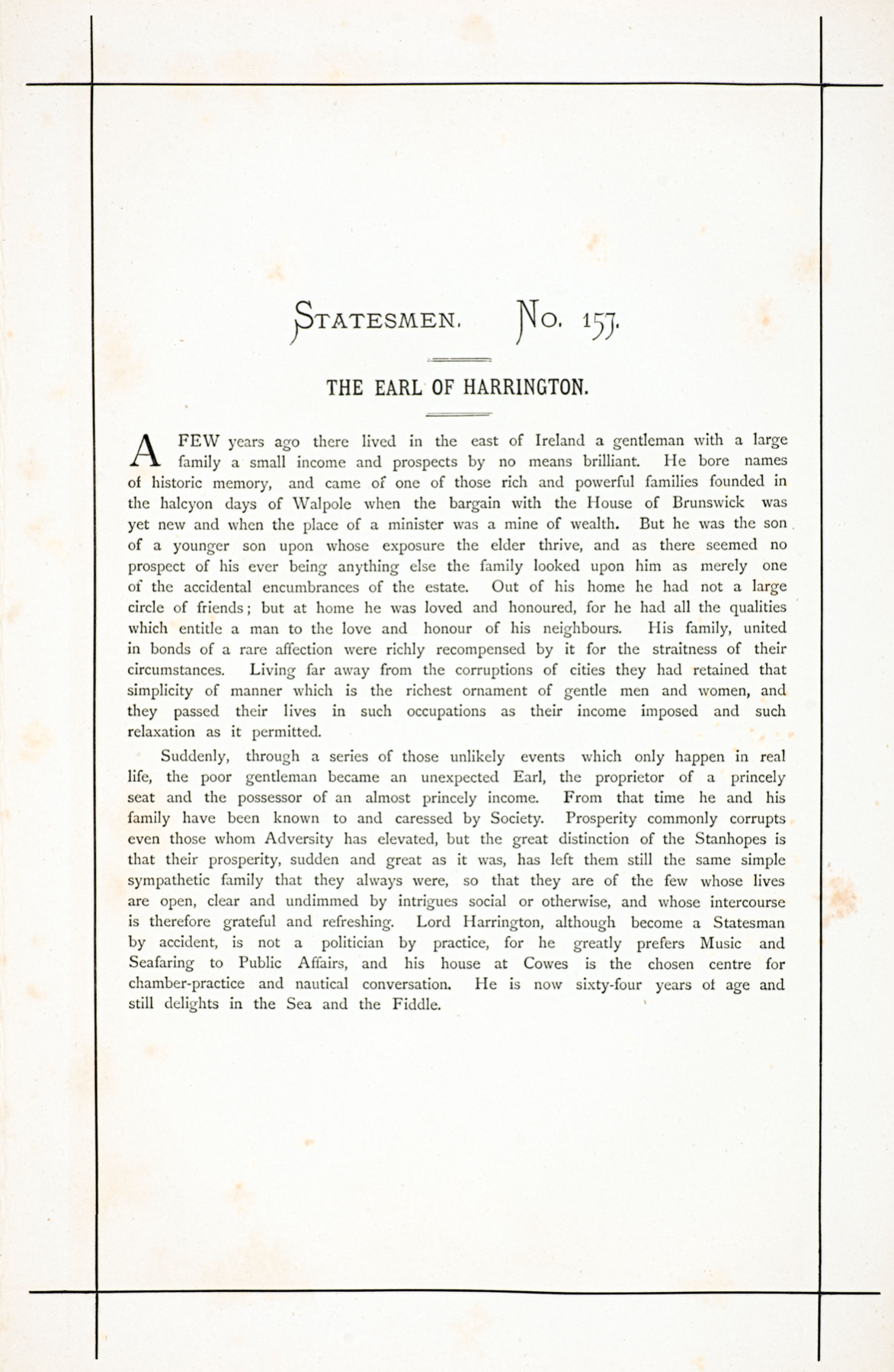


Charles Wyndham Stanhope (1809-1881) was the 7th Earl of Harrington. The grandson of the 3rd Earl of Harrington, the earldom had passed to him in 1866 following the death of his first cousin, Sydney Seymour Hyde Stanhope, who had died aged just 20 and childless.
“A few years ago there lived in the cast of Ireland a gentleman with a large family a small income and prospects by no means brilliant. He bore names of historic memory, and came of one of those rich and powerful families founded in the halcyon days of Walpole when the bargain with the House of Brunswick was yet new and when the place of a minister was a mine of wealth. But he was the son of a younger son upon whose exposure the elder thrive, and as there seemed no prospect of his ever being anything else the family looked upon him as merely one of the accidental encumbrances of the estate. Out of his home he had not a large circle of friends; but at home he was loved and honoured, for he had all the qualities which entitle a man to the love and honour of his neighbours. His family, united in bonds of a rare affection were richly recompensed by it for the straitness of their circumstances. Living far away from the corruptions of cities they had retained that simplicity of manner which is the richest ornament of gentle men and women, and they passed their lives in such occupations as their income imposed and such relaxation as it permitted.
Suddenly, through a series of those unlikely events which only happen in real life, the poor gentleman became an unexpected Earl, the proprietor of a princely seat and the possessor of an almost princely income. From that time he and his family have been known to and caressed by Society. Prosperity commonly corrupts even those whom Adversity has elevated, but the great distinction of the Stanhopes is that their prosperity, sudden and great as it was, has left them still the same simple sympathetic family that they always were, so that they are of the few whose lives are open, clear and undimmed by intrigues social or otherwise, and whose intercourse is therefore grateful and refreshing. Lord Harrington, although become a Statesman by accident, is not a politician by practice, for he greatly prefers Music and Seafaring to Public Affairs, and his house at Cowes is the chosen centre for chamber-practice and nautical conversation. He is now sixty-four years of age and still delights in the Sea and the Fiddle.”